This Week at READ USA
Literacy Locker Room at Englewood Elementary
- Read USA Inc.
- March 9 2023
Even though football season is over, the Jacksonville Jaguars are still at it!
Last week, READ USA hosted a Literacy Locker Room event at Englewood Elementary alongside our partner, Jacksonville Jaguars Foundation, and sponsor, The Florida Lottery. This was our fourth Literacy Locker Room since last fall, yet the excitement and fun is still fresh every time!
Representatives from The Florida Lottery; Jaguars Foundation Community Impact and Programs Manager Michael Carnahan and READ USA staff members Jake Cartrette and Nahume Mosby attended the event. Special guests were Jacksonville Jaguars #20 Daniel Thomas, members of the Jacksonville Roar, and Jaxson de Ville.

Each child receives a free book from the Jacksonville Jaguars Foundation and READ USA during Literacy Locker Room events at elementary schools across Duval County.
Jaguars players also read with the children during Literacy Locker Room events, which not only gives the students a whole new level of fun during their school day, but also sets a positive, memorable example that connects literacy, sports, and local celebrities to engage young minds in reading.
Check out some of the photos from yesterday’s event, which was sponsored by The Florida Lottery.
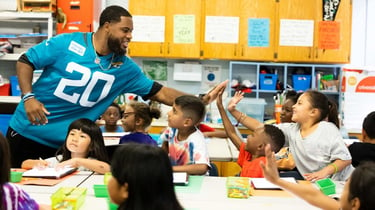
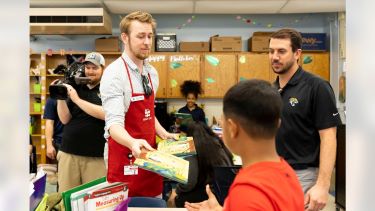
Thank you to the Jacksonville Jaguars Foundation and The Florida Lottery for your ongoing support of READ USA and your commitment to closing the literacy gap in Duval County!
$25/hour Opportunity: We Need Tutor Assessors
READ USA’s Literacy Tutoring program positively impacts thousands of lives in our community – from the students who receive tutoring to the teen tutors who learn workforce development skills, as well as the educators and READ USA staff who support the entire tutoring process.
And now YOU can be a part of it!
READ USA is seeking Assessors for our Literacy Tutoring program. Assessors are responsible for administering assessments and reporting data for elementary students using standardized and evidence-based measures. Assessors:
- Receive $25/hour.
- Receive paid (mandatory) training with supporting materials at the Schultz Center. Training dates are:
- March 27, 4:30-7:30 p.m.
- March 31, 10 am-2 p.m.
- Must have a bachelor’s degree or higher.
- Must participate in a background check and fingerprinting (a requirement for working in the schools).
Assessments begin in April 2023. Apply here today! Feel free to also forward this email to anyone you think might be interested.
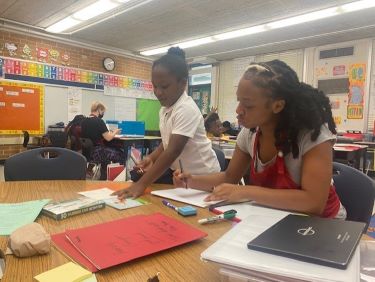
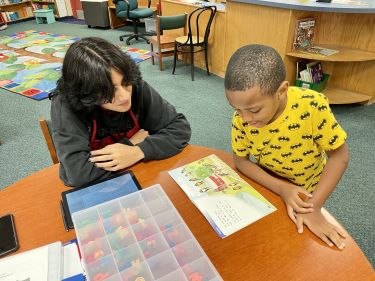
Calling All Volunteers: READ USA Book Fairs Start Soon!
READ USA will begin hosting our annual Book Fairs that take place in ALL elementary schools across Duval County during April-May, pending DCPS Board approval.
Volunteers are essential to the success of the Book Fairs – and NOW is the time to sign up!
At the Book Fairs, volunteers help with nearly everything – from set-up to tear-down, to helping young minds choose their favorite books, to helping ensure everything just runs smoothly!
Join us for a day of inspiration and fun at the READ USA Book Fairs! If you have ever seen a child’s excitement when they receive their very own FREE books – some of them for the first time in their lives – then you know you are in for a real treat!
Apply here today!
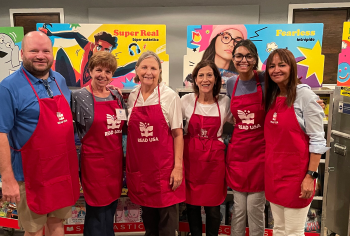
Children’s Book: The Story of Bodri, by Hédi Fried
Illustrated by Stina Wirsén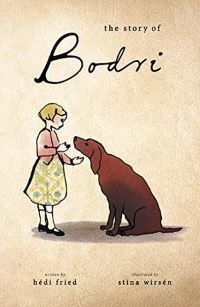
The Story of Bodri is a genuine look at a child who suffers the cruelty of experience as a victim of the Holocaust. Hédi is “a happy child in a happy place” until everything changes. As things unravel around her, Hédi is comforted by her thoughts of Bodri, the dog. Bodri keeps the girl and her sister from total despair. As Bodri waits outside the gates for his people to come back to him, the girls dream of a better time, of reunification, and of comfort.
Although a hard story to hear, the Swedish-Romanian author says readers must listen. Her hope is that by hearing this story, people will always choose good. A nod to International Women’s Day, this Holocaust survivor and woman author uses just the right language to provide a degree of understanding to a painful time in history. The Story of Bodri is a finalist for Florida Children’s Book Awards 2022-2023 3rd-5th grade.
Submitted by Tabetha Cox, Tutoring Program Director
Parent Education Corner: Play is Essential to Learning!
Playing with others is where learning takes flight! Through play, children, especially very young children, learn essential skills, regulation, and bonding. Through imaginative play, children practice storytelling, role-play, and problem solving. Children have the freedom to explore, and play supports the child’s social, emotional, and intellectual development. Not only is development encouraged but play also increases the child’s vocabulary and language skills. When children play, they are motivated and engaged, and this fuels their growth.
There are two types of play for young children. Adult-initiated or adult-guided play is structured. This includes play such as: duck, duck, goose, sing-alongs, and other such games. Another type of play is child-initiated play. This type of play is seen when children initiate their own fantasy play, run around a playground with friends, play in the backyard or their room on their own, or pretend to be a pirate with their siblings.
A balance of these two types of interaction is most effective for young children.
Do you have any questions or ideas for the Parent Education Corner? Anything you’d like to learn? Let us know here!
